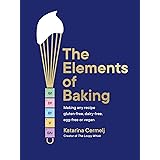Are you navigating the labyrinthine aisles of the grocery store, wondering how to choose a truly authentic and high-quality extra virgin olive oil? If you’ve just watched the video above, you’ve received some excellent foundational tips directly from an expert. But as with any culinary art, the nuances of selecting the finest olive oil run deeper than the surface.
For Italians, choosing olive oil is less about a brand name and more about understanding its provenance, its journey from tree to bottle, and its inherent vitality. It’s about discerning the liquid gold that elevates every dish, ensuring its full health benefits and exquisite flavor profile. Let’s delve into the intricate world of extra virgin olive oil selection, expanding on the video’s essential advice to empower your next purchase.
The Undisputed King: Why Always Choose Extra Virgin Olive Oil
The video emphatically states: always opt for extra virgin olive oil. This isn’t just a preference; it’s a non-negotiable standard for quality and health. Unlike refined olive oils, which undergo chemical processes that strip away valuable nutrients and flavor, extra virgin olive oil is a testament to purity and minimal intervention.
It’s extracted solely by mechanical means and at cold temperatures, typically below 27°C (80°F). Think of it like fresh-squeezed juice from a fruit, retaining all its natural goodness. This ‘cold extraction’ is crucial because heat can degrade the delicate compounds within the oil, particularly the potent antioxidants and polyphenols that are its hallmark.
These polyphenols are the superstars, responsible for EVOO’s characteristic peppery or bitter notes, as well as its incredible anti-inflammatory and cardiovascular benefits. The lower the temperature during extraction, the more of these volatile compounds are preserved, making the oil not just tastier but significantly healthier. A high-quality extra virgin olive oil will also boast a low acidity level, typically below 0.8%, indicating the freshness and health of the olives at the time of pressing.
Guardians of Goodness: The Importance of Dark Bottles
Just as a vampire shies from sunlight, so too does quality olive oil. The video rightly highlights that olive oil is highly sensitive to light, which acts as a catalyst for oxidation, ultimately spoiling the oil and diminishing its antioxidant content. Picture it as a shield for the precious liquid inside.
Light exposure initiates a chemical reaction called photo-oxidation, leading to the formation of free radicals and off-flavors. This process transforms the vibrant, fresh notes into stale, rancid ones. Therefore, packaging in a dark glass bottle, or even better, an opaque tin, is a clear indicator that the producer understands and respects the integrity of their product.
Once purchased, continue this protective philosophy at home. Store your extra virgin olive oil in a cool, dark pantry, away from direct sunlight and heat sources like stovetops. Each interaction with light and air is a step towards its degradation, so mindful storage preserves its vibrancy and beneficial compounds for longer.
Certifications That Speak Volumes: Decoding DOP and IGP
When selecting olive oil, labels like DOP and IGP are not merely fancy acronyms; they are formidable seals of authenticity and quality, as the video aptly points out. These certifications, recognized by the European Union, are akin to a geographical fingerprint, guaranteeing specific standards of origin and production.
DOP: Denominazione di Origine Protetta (Protected Designation of Origin)
A DOP certification is the highest form of protection. It signifies that the entire production process—from the cultivation of the olives and their harvesting to the milling and bottling of the oil—occurs within a specific geographical area. Furthermore, the oil must adhere to stringent quality parameters unique to that region, often including specific olive varietals, cultivation methods, and extraction techniques.
Think of DOP as locking in a product’s identity to a specific terroir, much like a fine Chianti Classico wine. It ensures that the olive oil you are buying embodies the distinct characteristics of its declared origin, making it a truly authentic regional expression.
IGP: Indicazione Geografica Protetta (Protected Geographical Indication)
An IGP certification is slightly less restrictive than DOP but still offers strong assurances. For an olive oil to bear the IGP label, at least one of its production phases (cultivation, milling, or bottling) must take place within the specified geographical area. While some raw materials might come from outside the designated region, the product’s quality, reputation, or other characteristics must be attributable to its geographical origin.
Both DOP and IGP certifications serve as robust safeguards against fraud, ensuring consumers receive olive oil that genuinely hails from a specific region and meets defined quality criteria. They are vital cues for anyone seeking true Italian olive oil quality and character.
The Essence of Freshness: Understanding Harvest and Expiry Dates
The video reminds us that olives are fruit and olive oil is their juice, emphasizing the paramount importance of freshness. This analogy is profoundly accurate; just as you wouldn’t want stale orange juice, you desire olive oil that is as close to its harvest as possible. The 18-month minimum expiry date recommendation isn’t arbitrary; it’s a practical guideline for discerning freshness.
High-quality extra virgin olive oil is best consumed within 12-18 months of its harvest date, not its bottling or best-by date. The harvest date indicates when the olives were picked and pressed, providing a true gauge of the oil’s age. Over time, even perfectly stored olive oil will slowly lose its vibrant flavors and beneficial compounds as oxidation inevitably progresses.
A recently harvested olive oil bursts with more intense fruitiness, a robust peppery finish, and higher levels of polyphenols. Always prioritize bottles that clearly state the harvest date, or at least have an expiry date that stretches well into the future, indicating a recent production. This diligence ensures you’re enjoying the olive oil at its peak, experiencing its full aromatic complexity and health benefits.
Beyond the Label: Sensory Evaluation for the Discerning Palate
While labels and dates provide essential clues, the true Italian way of selecting olive oil involves engaging the senses. Once you’ve narrowed down your choices, a sensory evaluation can distinguish the extraordinary from the merely good. You wouldn’t buy a car without a test drive; consider tasting a “test drive” for your olive oil.
When tasting extra virgin olive oil, look for a spectrum of desirable notes: fresh grass, artichoke, tomato leaf, green apple, almond, or even a hint of bitterness. A pleasant peppery sensation at the back of the throat is often a sign of high polyphenol content, a mark of quality. These are the characteristics that denote a vibrant, well-made olive oil.
Conversely, be wary of undesirable attributes that indicate defects. A musty smell might suggest olives that were moldy before pressing, while a metallic taste could point to improper processing or storage. A completely bland flavor, often described as ‘flat,’ means the oil has lost its vitality, likely due to age or poor quality olives. Rancidity, identifiable by a waxy, crayon-like, or old-nuts scent, is the most common defect, signaling that the oil has oxidized beyond its prime.
The Art of Selection: Integrating Knowledge into Practice
Armed with these insights, your approach to buying extra virgin olive oil will transform. It’s no longer a guessing game but a deliberate act of choosing quality, authenticity, and flavor. Remember the core principles: always select extra virgin, protect it from light in dark bottles, seek out credible certifications like DOP or IGP, and prioritize freshness indicated by a recent harvest date.
Treat your olive oil as the precious fruit juice it is, understanding its delicate nature and the journey it took from olive grove to your kitchen. By applying these criteria, you’re not just buying a condiment; you’re investing in a cornerstone of healthy cuisine, bringing the true essence of the Mediterranean to your table.











